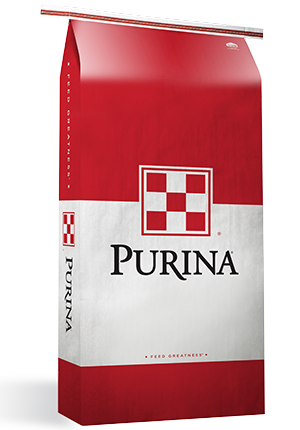
Flushing Goats Leads to Breeding Season Success
Wellness : Nutrition

Nutritional flushing is a key component to goat breeding season success. The flushing process involves increasing goat nutrition and energy intake before breeding season starts. This elevated nutrition helps optimize ovulation, conception and embryo implantation rates, which can result in a higher kidding percentage.
Implementing a flushing program on your farm can optimize the percentage of kids on the ground and help put more money in your pocket.
Breeding does in their first estrus or heat cycle provides more value when selling weaned kids. Breeding earlier means kidding sooner, which provides kids the advantage of additional days to gain weight before weaning compared to their younger counterparts – ultimately boosting the number of pounds sold post-weaning.
As does age, reproductivity tends to decrease. Additionally, terminal breeds typically produce fewer offspring than maternal breeds. Because flushing supports ovulation and embryo implantation rates, even does with historically lower reproductive performance can have success.1
Flushing should begin around 45-60 days before breeding and continue into the first stages of gestation. Adding a complete feed or a high-fat supplement product such as Purina® Goat Charge Concentrate or Purina® Accuration® Sheep & Goat Hi-Fat Block to the mix will ensure does meet their energy requirements during this critical time.
Once does have confirmed pregnancies, diets can back down to an average nutrition level with pasture and a supplement tub.
As does enter different production stages, their target BCS changes – and changes to their diet should follow suit. This 1-5 scale is especially useful before breeding as energy requirements and BCS goals increase.
Flushing aims to bring does’ body condition scores up to 2.5 to 3.0 before breeding and into the first stage of gestation. Getting does to this condition can lead to optimal conception and embryo survival rates.
Using a planned-out flushing approach in the lead-up to goat breeding season will go a long way towards your herd’s reproductive and performance success.
Ready to put your goat nutrition program to the test? Unlock the results you’re looking for with a Proof Pays trial.
Implementing a flushing program on your farm can optimize the percentage of kids on the ground and help put more money in your pocket.
The low-down on flushing goats
Flushed does have a higher chance of breeding at first service, while does fed a lower nutrition level are more likely to miss this first breeding window.Breeding does in their first estrus or heat cycle provides more value when selling weaned kids. Breeding earlier means kidding sooner, which provides kids the advantage of additional days to gain weight before weaning compared to their younger counterparts – ultimately boosting the number of pounds sold post-weaning.
As does age, reproductivity tends to decrease. Additionally, terminal breeds typically produce fewer offspring than maternal breeds. Because flushing supports ovulation and embryo implantation rates, even does with historically lower reproductive performance can have success.1
Don’t skimp on key nutrients
While adding extra grain to the diet will ramp up energy levels, don’t forget about these key nutrients as you plan your flushing program:- Vitamins and minerals: Every goat nutrition program should start with vitamins and minerals. Regardless of the production stage, these two components remain crucial to both the doe and her kid.
- Fat: Increasing fat in the diet also increases energy intake. And, fat’s influence on reproductive hormones sets does up for successful conception.
- Protein: Maintaining protein levels between 10-16% of the total diet is ideal for reproductive health.
Flushing should begin around 45-60 days before breeding and continue into the first stages of gestation. Adding a complete feed or a high-fat supplement product such as Purina® Goat Charge Concentrate or Purina® Accuration® Sheep & Goat Hi-Fat Block to the mix will ensure does meet their energy requirements during this critical time.
Once does have confirmed pregnancies, diets can back down to an average nutrition level with pasture and a supplement tub.
Keep body condition score in mind
As a primary indicator of a doe’s energy reserves, body condition score (BCS) allows producers to evaluate the nutritional needs of the herd. By meeting your BCS targets, does can take less time to breed and have heavier kids at weaning.As does enter different production stages, their target BCS changes – and changes to their diet should follow suit. This 1-5 scale is especially useful before breeding as energy requirements and BCS goals increase.
Flushing aims to bring does’ body condition scores up to 2.5 to 3.0 before breeding and into the first stage of gestation. Getting does to this condition can lead to optimal conception and embryo survival rates.
Using a planned-out flushing approach in the lead-up to goat breeding season will go a long way towards your herd’s reproductive and performance success.
Ready to put your goat nutrition program to the test? Unlock the results you’re looking for with a Proof Pays trial.
1 Metzger M. 2018. Flushing small ruminants for a higher ovulation rate. Michigan State University Extension.



